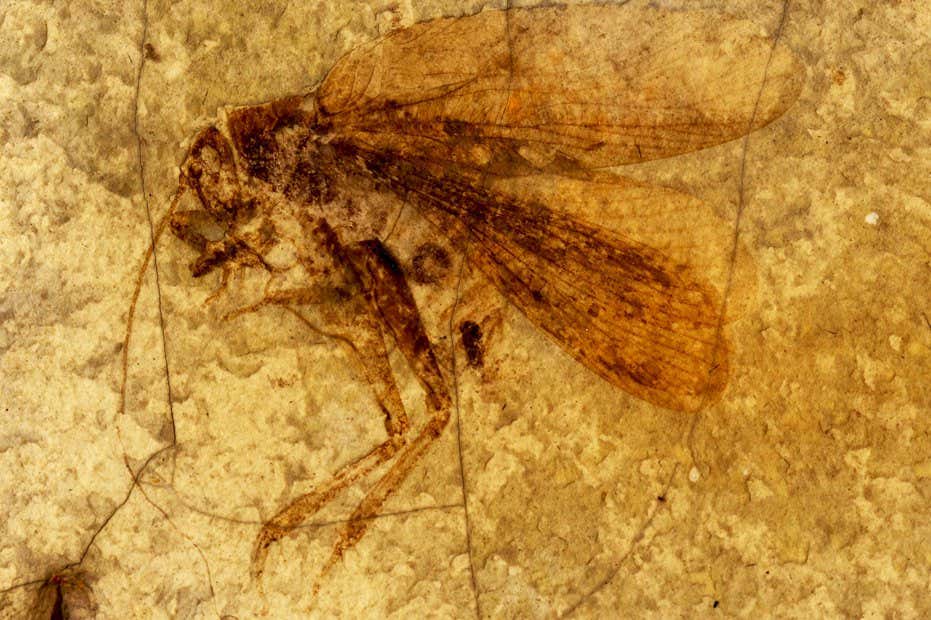[ad_1]
Bush crickets from the Triassic era onwards evolved high-frequency songs to avoid being heard by predators
Life
12 December 2022
A male katydid fossil from the Early Cretaceous period Bo Wang
Cricket-like insects once had a much greater musical range than those alive today, according to researchers who have tried to recreate the insect soundscape of the dinosaur era.
Male katydids – also known as bush crickets –have been rubbing parts of their wings together to make communication sounds for at least 240 million years – probably longer than any other land animal. These large insects initially communicated in low frequencies, but from about 220 million years ago, they evolved high frequency sounds to help them communicate without attracting the attention of mammals, says Michael Engel at the University of Kansas.
“If you’re screaming over a long distance, obviously you’re not just screaming to your mate or to the male that you want to push away, but you’re also screaming out to anybody else who might be listening,” Engel says. “And as you can imagine, a lot of things love to eat insects – and that was true in the past as it is today.”
Scientists had already suspected that katydids might have changed their tunes before mammals evolved better hearing about 160 million years ago. But they had no evidence for that theory until Engel and his colleague Bo Wang at Nanjing Institute of Geology and Palaeontology in China discovered a collection of 63 very well-preserved male and female katydid fossils, representing 18 species from the Middle Jurassic period, 160 million years ago, in north-eastern China.
The team photographed the three-dimensional fossils to investigate the males’ stridulatory organs – a set of five structures on the forewings that produce and radiate sound – and both sexes’ hearing organs, which resemble a somewhat simplified form of the human middle and inner ear structures and are located on the two front legs. In both modern and ancient species, all katydids have ears, but only males have stridulatory organs.
The researchers compared their findings to those of 21 specimens from the Late Triassic Madygen Formation in Kyrgyzstan, dating from 220 million years ago, and three specimens of one species from the Late Triassic Molteno Formation in South Africa, dating from 200 million years ago. They added these to an existing database of all known katydids, including modern species, to evaluate how the organs and sounds evolved over time.
The team then recreated the calls of these ancient katydids using computer models that link katydid organ anatomy to the sounds they make. The program simulates the frequency emitted by the organs – although it cannot estimate the rhythm of the calls, Engel says.
Recreation of a katydid from 165 million years ago
The sounds of the ancient katydids ranged from about 4 kilohertz – close to the highest piano key – to about 16 kilohertz, which is near the upper limit of human hearing.
Between 220 million years ago and 160 million years ago, there was a clear shift towards higher frequencies – and by then the hearing range of mammals was following suit, evolving the capacity to hear high frequencies, too.
The findings provide a glimpse of what the world sounded like during the tens of millions of years before the first frogs started croaking and even more before the first birds started chirping or singing, says Engel. Then, each species of katydid called at different frequencies across the fields, creating a “complex musical structure” with a variety of tones. “In other words, not everyone there was a baritone,” he says. “We’ve got tenors; we’ve got altos…. This is not a monotone Gregorian chant we’re dealing with, [but] a chorus of ranges and a variety of songs.”
Journal reference: PNAS, DOI: 10.1073/pnas.2210601119
More on these topics:
[ad_2]
Source link




